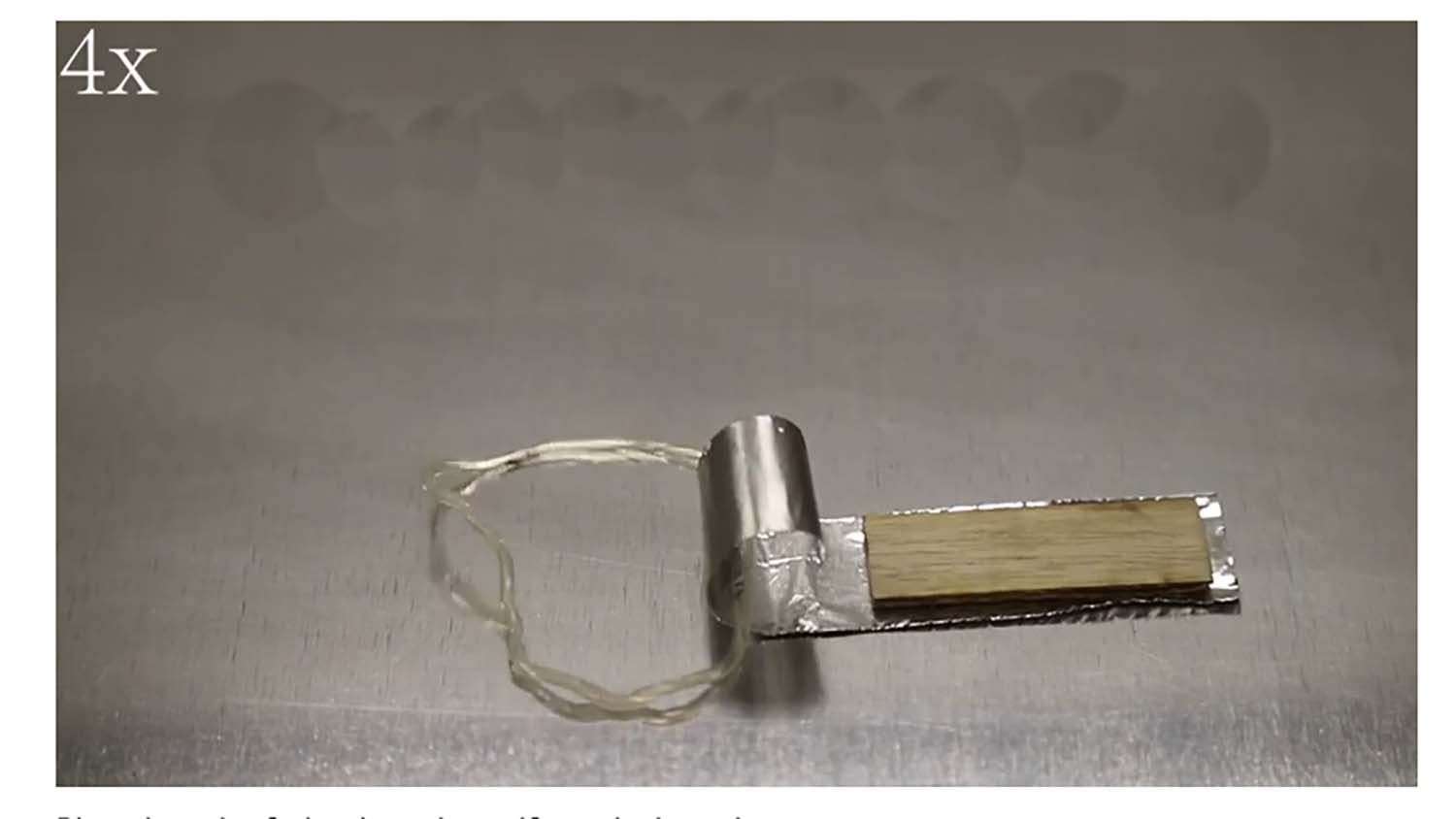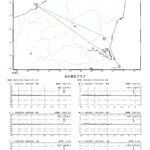2022-11-15 ノースカロライナ州立大学(NCState)
 Ringbot towing a payload across a flat surface.
Ringbot towing a payload across a flat surface.
リングボットは、液晶エラストマーでできており、ブレスレットのようなループ状のリボン状になっている。このリングボットを気温55度以上の場所に置くと、リボンの表面に触れている部分は収縮し、空気に触れている部分は収縮しない。これにより、リボンに転がり運動が発生する。
また、リングボットの直径より30%以上狭い空間でも、リングボットが体型を変化させて通り抜けられることを実証した。そして、隙間が狭すぎて柔らかいロボットが通り抜けられないときは、隙間から離れるように方向を変える。
同様に、研究者がリングボットに赤外線を照射すると、リボンの光に当たった部分は収縮し、光から遮断された部分は収縮しない。これにより、リボンにも転がり運動が発生する。
高温の場所に置くと、這うように動くリングボットが下から上へ移動する。しかし、赤外線を照射すると、上から下に向かって動き出す。
<関連情報>
- https://news.ncsu.edu/2022/11/autonomous-crawling-ringbots/
- https://onlinelibrary.wiley.com/doi/10.1002/adma.202207372
自立した波状リングの自律的な踊りや動きを支える自己持続的スナップ Self-sustained Snapping Drives Autonomous Dancing and Motion in Free-standing Wavy Rings
Yao Zhao,Yaoye Hong,Fangjie Qi,Yinding Chi,Hao Su,Jie Yin
Advanced Materials Published: 11 November 2022
DOI:https://doi.org/10.1002/adma.202207372
This article has been accepted for publication and undergone full peer review but has not been through the copyediting, typesetting, pagination and proofreading process, which may lead to differences between this version and the Version of Record. Please cite this article as https://doi.org/10.1002/adma.202207372
Abstract
Harnessing snapping, an instability phenomenon observed in nature (e.g., Venus flytraps), for autonomy has attracted growing interest in autonomous soft robots. However, achieving self-sustained snapping and snapping-driven autonomous motions in soft robots remains largely unexplored. Here, we report harnessing bistable, ribbon ring-like structures for realizing self-sustained snapping in a library of soft liquid crystal elastomer wavy rings under constant thermal and photothermal actuation. The self-sustained snapping induces continuous ring flipping that drives autonomous dancing or crawling motions on the ground and under water. The three-dimensional, free-standing wavy rings employ either a highly symmetric or symmetry-broken twisted shape with tunable geometric asymmetries. We find that the former favors periodic self-dancing motion in place due to isotropic friction, while the latter shows a directional crawling motion along the predefined axis of symmetry during fabrication due to asymmetric friction. It shows that the crawling speed can be tuned by the geometric asymmetries with a peak speed achieved at the highest geometric asymmetry. Lastly, we show that the autonomous crawling ring can also adapt its body shape to pass through a confined space that is over 30% narrower than its body size.



